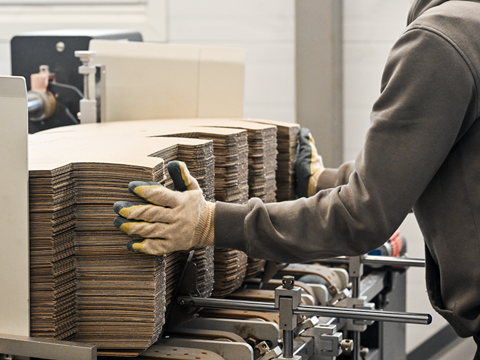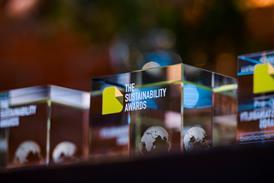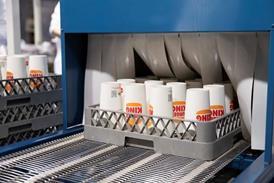
The European pulp and paper sector saw increases in consumption and production last year, according to Cepi’s preliminary statistics report, with packaging driving its recycling performance; but upcoming energy and industry policies, global trade wars, and geopolitical instability could still cause ‘profound impact’, it adds.
After two years of contraction, consumption of paper and board reportedly increased by 7.5%, while production is said to have grown by 5.2%. However, this development comes after production fell by 13% in 2023, meaning levels remain lower than before the COVID-19 pandemic.
Global paper board production was also said to recover, although the European sector outperformed global competitors by a ‘small margin’.
Meanwhile, the utilization of Paper for Recycling (PfR) was said to increase by 4.1% in 2024 after two consecutive years of decline. While it is still lower than its peak in 2021, it is still said to be at ‘far higher’ levels than the early 2000s, having grown by 5 million tons despite decreases in consumption and production.
Packaging is cited as a main driver in the sector’s recycling performance, with the industry said to account for almost two-thirds (63%) of total paper and board production. It apparently saw a 6.5% increase in the production of paper-for-recycling packaging grades since 2023.
Demand for tissue paper was said to rebound at a 5.8% growth rate, while graphic paper – including newsprint, printing and writing paper, among other applications – experienced its first year of expansion since 2010, growing by 5.2%.
Even so, energy prices are still said to be twice as high as they were before the COVID-19 pandemic; this is feared to impact the European industry’s competitiveness, especially among its most energy-intensive grades.
As growth rates in the European Union are ‘stubbornly below other advanced economies’ average’, with production across all EU manufacturing sectors still said to be 10% lower than in 2021, the EU Commission is preparing to publish new documents laying out its plans to restore competitiveness in manufacturing while boosting circularity and bioeconomy initiatives.
Additionally, exports were said to increase overall, accounting for 21% of paper and board production in 2024. Cepi describes the global trade balance of Europe’s pulp and paper industries as ‘by far positive’ and ‘one of the top EU manufacturing sectors by this measure’.
“In a cyclical industry, we see positive signs of growth in the pulp and paper sector,” says Jori Ringman, director general at Cepi. “Whether this growth can be sustained depends in part on what EU Institutions will do to allow us to compete on an equal footing, not only with other pulp and paper producers in the world, but also with industries based on fossil materials.
“The expected Clean Industry Deal, the Affordable Energy Plan and Bioeconomy Strategy, combined with advancing defossilization, circular economy and simplification of EU regulation are elements that the pulp and paper industry now needs in order to bring back growth and investments to Europe.”
In light of increasing trade tensions, Cepi’s report notes a 16.8% increase in exports to North America in 2024; it elaborates that the EU and the US have not set import tariffs on each other’s goods for the past twenty years, with the EU importing pulp from the US while exporting high amounts of paper and board.
However, as US President Donald Trump turns to increasingly protectionist policies to stimulate the American economy, some manufacturers based in the US may no longer be able to rely on imported goods. Charles Haverfield, CEO of US Packaging & Wrapping, spoke to us about how local sourcing, reshoring production, and closed-loop recycling could potentially turn an international trade war into an opportunity for sustainable packaging.
After Cepi noted a decline in production in 2023, Neil Osment, MD of packaging market research company NOA, spoke to Packaging Europe late last year to lay out his view of the folding cartons and corrugated board industry’s development in the coming years.
In other news, Cepi previously urged the European Union to include a definition of renewable carbon in its carbon removal certification framework. It argued that this concept is already delineated in international standards, with renewability defined as the ability of a resource to replenish naturally at source at a rate at least the same as consumption; and that, without a clear definition, the framework will fall short of a circular, climate-friendly economic model.
If you liked this story, you might also enjoy:
Reuse vs. single use – which is better for the environment?
Sustainable Innovation Report 2025: Current trends and future priorities
What can the world learn from South Korea’s world-leading performance in plastics circularity?

















No comments yet